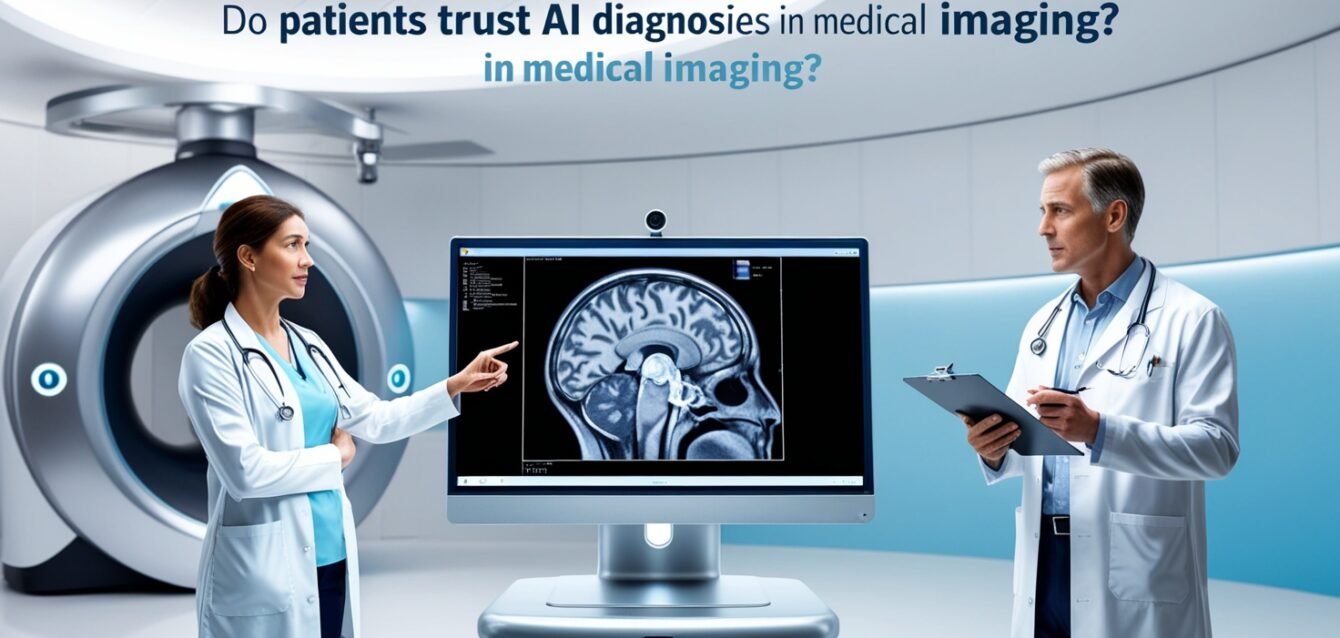Understanding the Role of AI in Medical Imaging
Artificial intelligence (AI) has emerged as a transformative force in the field of medical imaging, significantly enhancing the diagnostic process and treatment planning capabilities. By leveraging machine learning algorithms and neural networks, AI can analyze complex imaging data with a speed and accuracy that surpasses traditional methods. This advancement has led to improved outcomes in various imaging modalities, including X-rays, MRIs, and CT scans.
Machine learning, a subset of AI, utilizes statistical techniques to enable machines to improve their performance with experience. In the context of medical imaging, it involves training algorithms on large datasets of annotated medical images, allowing them to recognize patterns and anomalies in new images. This process has proven invaluable in detecting diseases at earlier stages, thus facilitating timely interventions. Neural networks, particularly deep learning models, further enhance the capability of AI systems, enabling them to process vast amounts of pixel-level data from imaging scans to identify subtle features that may indicate pathology.
In practice, AI applications in medical imaging range from automated detection of tumors in mammograms to the analysis of brain scans for signs of neurodegenerative diseases. For instance, studies have shown that AI systems can identify lung cancer in CT scans with accuracy comparable to radiologists. Such successful implementations not only enhance diagnostic precision but also alleviate the workload of healthcare professionals, enabling them to focus on complex cases that require human judgment.
Several case studies illustrate AI’s potential in transforming medical imaging. For example, researchers at a prominent hospital developed an AI tool that successfully prioritized imaging studies based on urgency, significantly reducing patient wait times and improving overall care quality. As these technologies continue to mature, they promise to reshape the landscape of medical imaging, ultimately offering greater benefits to both patients and healthcare providers alike.
Patient Perspectives on AI Diagnoses
The integration of artificial intelligence (AI) in medical imaging has prompted significant interest and inquiry regarding patient attitudes toward AI-assisted diagnoses. Surveys and research studies indicate a spectrum of responses, revealing that patient trust is influenced by several key factors. One of the primary considerations is the transparency of AI systems. Patients are more likely to trust AI diagnoses when they understand how these systems operate and the logic behind their conclusions. This transparency can alleviate concerns about the opaque nature of machine learning algorithms that often seem inscrutable to non-experts.
Another pivotal factor shaping patient perceptions is the accuracy of AI diagnoses in comparison to traditional diagnostic methods. Research has shown that when AI demonstrates high diagnostic accuracy, patients tend to express an increased sense of trust in the technology. However, concerns persist, particularly when patients perceive that AI may yield misdiagnoses or incorrect assessments, which can lead to reluctance in fully embracing these innovations in medical imaging.
Personal experiences with technology also play a crucial role in influencing patient attitudes. For instance, those who are more familiar with digital tools and AI applications in their daily lives may exhibit greater confidence in AI-assisted diagnoses. Demographic differences further complicate the landscape of trust levels; younger patients with higher educational attainment and greater exposure to technology often report more positive perceptions of AI in healthcare. In contrast, older individuals may exhibit skepticism, stemming from a lack of familiarity with technological advancements.
This nuanced understanding of patient perspectives underscores the importance of addressing specific concerns and fostering educational initiatives that elucidate the benefits and limitations of AI diagnoses. By promoting transparency and enhancing patient engagement, the healthcare sector can bridge the trust divide and facilitate acceptance of AI in medical imaging.
Challenges and Concerns Surrounding AI in Medical Imaging
The integration of artificial intelligence (AI) in medical imaging has generated significant interest, yet it is not without its challenges and concerns that may affect patient trust. One primary issue is data privacy. Patients are rightfully concerned about how their medical information is collected, stored, and used by AI systems. Healthcare providers must ensure that they adhere to stringent regulations, such as HIPAA in the United States, to protect patient confidentiality and build assurance in AI technologies.
Moreover, algorithmic bias poses a serious threat to the reliability of AI diagnoses. If the datasets used to train AI models are not diverse or representative of the population, the systems may yield skewed results. This can lead to misdiagnoses or inadequate treatment recommendations for certain demographic groups, thereby eroding trust in the technology. Efforts to enhance the fairness of AI algorithms are imperative to prevent disparities and foster broader acceptance among patients.
A further concern involves the lack of human oversight in AI-driven processes. Many patients feel uncomfortable with the notion of machines making clinical decisions without physician input. A balance must be struck between leveraging AI for efficiency and maintaining the human element in patient care. This is particularly important in scenarios where nuanced judgment is required, as human experience and empathy cannot be replicated by AI systems.
Dehumanization of care is another factor influencing patient perceptions about AI. When technology takes precedence over personal interaction, patients may feel undervalued or ignored. Instances of high-profile AI failures, such as misdiagnoses or misleading recommendations, can exacerbate these feelings, creating lasting skepticism toward AI applications in healthcare. It is essential that the legal and ethical implications surrounding accountability in AI decisions are thoroughly explored and addressed to alleviate concerns and enhance patient confidence in this technology.
Building Trust in AI: Strategies for Healthcare Providers
The integration of artificial intelligence (AI) into medical imaging presents significant opportunities for improving diagnostic accuracy and operational efficiency in healthcare. However, for patients to fully embrace these advancements, healthcare providers and AI developers must employ comprehensive strategies to foster trust in AI-assisted diagnoses. Effective communication is paramount; providers should elucidate how AI tools function, clarifying that these systems are guided by sophisticated algorithms designed to support clinical decision-making rather than replace human expertise.
Education plays a pivotal role in building trust. Healthcare professionals must inform patients not only about the advantages of AI in enhancing diagnostic capabilities but also about its limitations. By candidly discussing the potential pitfalls of AI—such as the possibility of errors or biases—providers can cultivate realistic expectations and empower patients to feel informed about their care. This transparency breeds confidence, allowing patients to see AI as a complementary resource in their healthcare journey.
Involving patients in the dialogue about their care is another essential strategy. Providers can facilitate discussions regarding AI involvement in the diagnostic process, actively seeking patient input and addressing any concerns they may have. This participatory approach not only improves the patient experience but also demonstrates that healthcare providers value and respect patient insights.
Moreover, improving the integration of AI into clinical workflows is crucial for enhancing patient experience. Streamlined processes where AI assists rather than complicates the healthcare journey can lead to more efficient diagnoses and treatment options. By developing systems that prioritize patient comfort and understanding, healthcare providers can optimize the benefits of AI while maintaining the human touch that is essential for trust. Overall, collaboration between healthcare professionals and AI developers is vital in building a trustworthy AI system, ensuring that patients feel secure and supported throughout their healthcare experience.




